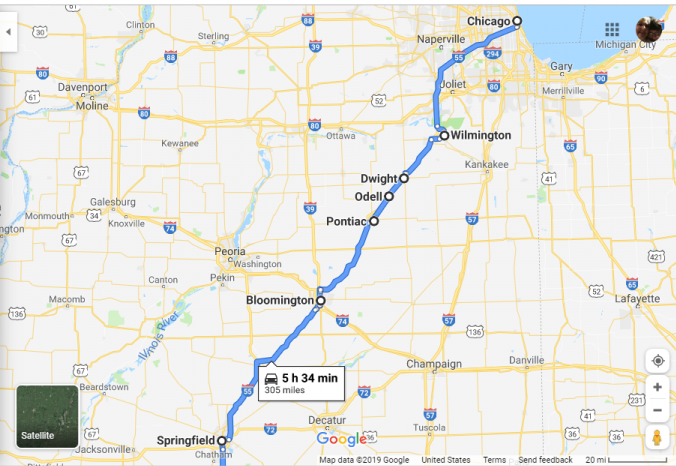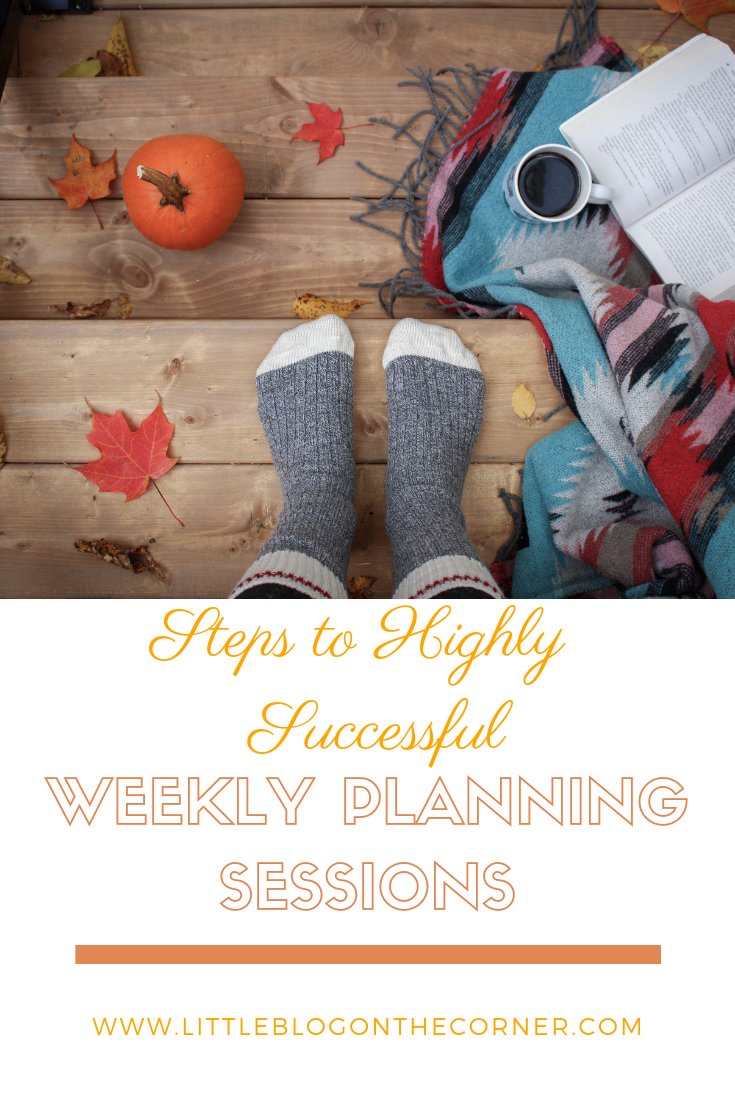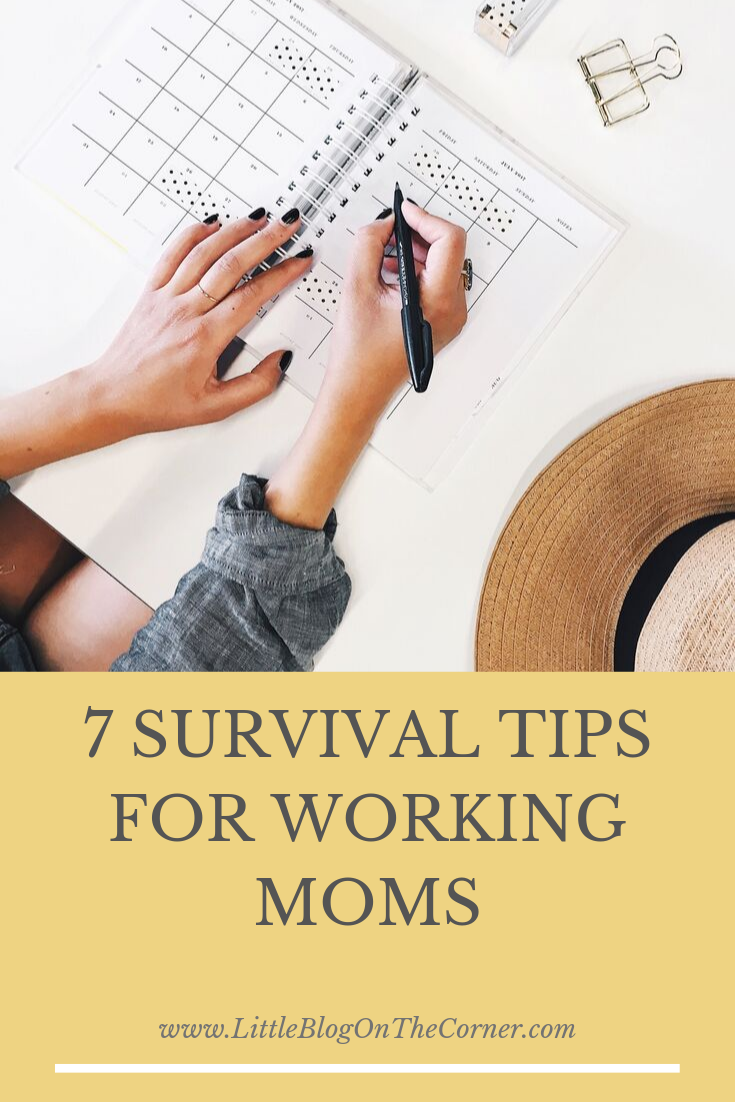Steps For Highly Successful Weekly Planning Sessions

Why are weekly planning sessions so important?
We’ve all heard the old adage, fail to plan, plan to fail, right?
That’s the exact reason why planning is so important and is not an option if you want to reach your goals and live your dreams.
All of us have goals that we want to meet, dreams that we hold in our hearts and in our heads that are trying to lead us to something bolder and greater than ourselves. And we really want to honor those dreams, don’t we? But how do we get there?
Quite frankly, I believe when you focus on your weekly planning sessions, you will actually make a huge dent in those goals and dreams.
The deal is, you have to plan life unless you want life to just happen to you.
And while I believe you need to focus on weekly planning sessions, it’s not the place to start when it comes to goal creation.
You have to start a whole lot bigger. In fact, you need to step way back to a yearly planning session. Then you can break down your goals from there.
Now, for those of you who sit down at least once a year to write out your goals, this post is for you! For those of you who don’t, go ahead and jump right in. Let’s get this party started!!
So, what is weekly planning session?
Bear with me while we use the following analogy.
Let’s pretend we’re going to plan our yearly vacation. We’ve decided we want to take a 2-week trip to follow Route 66 from Chicago to Los Angeles.
You grab your atlas or you complete a Google search of the route and you come up with a map of your trip that looks sort of like this:
Right?

You decided when you initially start your journey, your focus is going to be to travel through the state of Illinois (a small portion of your actual trip). So you complete another Google search of Route 66 in Illinois and now your map changes and it looks something more like this:

Are you with me so far?
So, you fly into Chicago, rent a car and actually head out of the city toward Wilmington, IL. Now that you have started your trip, you turn on your GPS. The route it gives you no longer looks like the map above, it’s going to give you actual directions that look more like this:
U.S. Route 66 Eastern Terminus
301 S Lake Shore Dr, Chicago, IL 60605Continue to I-55 S. Take the Interstate 55 S exit from US-41 S/S Lake Shore Dr4 min (2.2 mi)Head north on S Lake Shore Dr3 ft; Make a U-turn at E Jackson Dr1.8 mi: Use the right 2 lanes to take the Interstate 55 S exit toward Saint Louis0.4 mi Follow I-55 S to Co Hwy 44 in Wilmington Township. Take exit 241 from I-55 S51 min (52.8 mi)
Continue onto I-55 S52.5 mi; Take exit 241 toward Wilmington0.3 mi Continue on Co Hwy 44. Drive to E Baltimore St in Wilmington 8 min (4.8 mi)
Arrive at WILMINGTON, IL
You get the idea.
Each time you break the trip down into smaller chunks, the directions become much more detailed and much more specific. You now have a portion of the map with turn by turn directions.
You’re still going to the same place but your perspective has changed and the details have changed.
Without the specific directions from your GPS, if it’s a route you haven’t traveled before, you will have a difficult time getting from Chicago to Los Angeles or much of anywhere, for that matter.
So, let’s take that analogy and turn to goal planning sessions.
Let’s Start with a Yearly Planning Session

We’ll start by planning out your goals for the year. Just like your map of your trip from Chicago to Los Angeles, your initial plan is going to be an overall view of a plan from a global perspective.
(It takes discipline to make planning a habit but with a bit of tweaking of your thoughts and your daily schedule, it’s easier than it sounds.)
First of all, I need you to set aside enough time for your first planning session, preferably an hour or two. Make sure you have a quiet place to work so you can focus on the task at hand.
Take a sheet of paper and write down the following list of categories: Faith, Finances, Family, Health and Career. If there are other categories you prefer to focus on, list those instead.
Next, begin your planning session by brainstorming all of your dreams, desires. and goals…everything that you want to accomplish over the next year. Make sure they are specific and measurable.
Keep writing until you feel you have exhausted your list. Now, start narrowing your focus down to the things that are the most important to you and that are achievable in the next year.
Pick the top goal in each category that really jumps out at you. Those are the goals you are going to work on for the year.
- For instance, you might have decided you want to read your Bible through in a year,
- You want to increase your annual income by $4800.
- You want to add $3600 to savings in the next year,
- You want to build strong relationships with your spouse and children over the coming months.
- You want to lose 48 lbs in 12 months.
- And, you want to get a promotion at work.
(These numbers may seem high or low to you. I am just picking numbers at random as they will be easy to use as we go along.)
Now that you have identified the things you want to focus on, these become the primary targets for your annual life map.
Quarterly Planning Sessions
Let’s keep planning…

Just like we broke down our map from Chicago to Los Angeles, let’s chisel those yearly goals down into quarterly goals.
Using our examples, if you plan for the next quarter, you would need to:
- Read 1/4 of the Bible,
- Earn an extra $1200.
- Put $900 in savings.
- Schedule quarterly family getaways over the long weekends.
- Lose 12 pounds.
- Possibly, study-specific policy for your work exam and take on a major project for your supervisor.
You can see how we’ve broken down your goals a bit but some may still seem a bit out of reach.
Monthly Planning Sessions

So let’s keep planning.
Next, complete a monthly planning session.
Your plan might end up looking like this:
- Read 90 to 120 chapters of the Bible in a month.
- Earn an extra $400 for the month.
- Put $400 in savings monthly
- Rent a cabin and take the family on a trip to a national park.
- Lose 4 pounds.
- Volunteer at work to teach a policy class to your co-workers.
Weekly Planning Sessions

As you move through your planning sessions, Weekly goal planning is where your perspective changes and the details start to become more detailed just like the map of a city.
Our weekly plan might look like the following:
- Read approximately 22 to 40 chapters of the Bible in a week.
- Earn an extra $100 by making 3 extra sales calls per day
- Put $100 in savings each week.
- Have weekly family fun nights where everyone gets together to eat pizza and watch movies or play board games.
- Lose 1 pound this week by maintaining a keto-friendly diet plan.
- Cover supervisory duties in the supervisor’s absence.
Working on your weekly goals may not seem like you are getting anywhere at all but it’s during your weekly planning sessions where the rubber is really meeting the road. This is where you will be making consistent, ongoing efforts toward your ultimate goals.
There are other things that will come into play, of course, to make this plan a reality. You may need to cancel monthly subscriptions, for example, and not eat out as much in order to be able to add money to savings. You may have to add more sales or work on a side hustle to earn the extra $100.
Your sacrifices and changes will be personalized according to your lifestyle and family needs.
Daily To-Do’s

For me, daily planning is more of a to-do list. This is where you break those big goals down into your turn by turn directions.
Your daily to-do list might look like this:
- Get up 30 minutes earlier each day and read approximately 5 chapters of the Bible (or follow a yearly Bible reading plan).
- Earn an extra $20 per day through product sales.
- Put $20 in savings each day.
- Spend quality time with the family at the dinner table and before bedtime.
- Eat a low-carb lunch. Take a 30-minute walk during the lunch hour.
- Show up to work early. Be prompt to meetings. Support teammates and the supervisor.
Weekly Planning sessions and Check-Ins
Now that you have finished your planning sessions, let’s revisit our trip from Chicago to Los Angeles analogy.
When you leave, you have your route planned. You know where you are going and when you are going to get there.
But, it’s never that easy, is it? There’s an accident or two along the way. There’s road construction. The weather disrupts your plans. All kinds of things will come along to pull you off your path.
However true that is, it’s important to keep moving forward toward your end goal.
Unlike road trips, goals are often tossed to the side when the cares of this world start popping up.
The difference between people who are successful and those who are not is that the successful people don’t give up on the trip when they run into obstacles in the middle of the road. They make adjustments and keep on going.
And so it is with the road to goal achievement. There may be a few GPS recalculations along the way and you might have to take a few detours but if you don’t give up, you’ll make it to your destination,

Check your route regularly
Check-in with yourself weekly
It’s imperative that you get out your plan weekly and check in with yourself to monitor your progress.
Every Friday at the end of the day or Sunday night before going back to work, look over the plan you have created and have a weekly planning session to reflect on your progress. What did you accomplish over the last week? Are you still on the path to meet your year-end, quarterly and monthly goals? Do you need a course correction? Did you take a wrong turn along the way?
Take note of what worked and what did not and then make a plan to move forward over the next week. Come up with the top 3 things you need to do to keep the needle moving forward.
Do you need to listen to the Bible during your commute to make sure you are hitting your goal because you haven’t been able to read in the mornings?
Do you need to give up cable or Spotify so you can add to your savings?
Can you make additional sales or sell items you are no longer using online in order to have the money to add to savings for the week?
Or Check-in With a Friend or a Group of Friends
If you need encouragement meeting your goals and you don’t think you can do it alone, recruit a friend or a group of friends to work on your goals together. Get together for coffee weekly to discuss everyone’s progress. Encourage everyone to show up and be supportive of one another. If you have the right partners, then group sessions can be highly motivating.
To help you along the way, I have free goal setting printables available for you to download for the first 20 people who click below. Use these forms to brainstorm your goals and monitor them as you go along.
Review

Let’s review what we have learned:
- Planning is important to your success. It is not an option if you want to reach your goals and live your dreams.
- You have to plan your life unless you want life to just happen to you.
- Set aside an hour or more to brainstorm goals for the next year.
- Write down everything you can think of in the following areas: Faith, Finances, Family, Health and Career,
- Break yearly goals down into quarterly goals.
- Next, plan your month. Monthly planning sessions lead you toward the accomplishment of quarterly and yearly goals.
- Your weekly planning sessions and daily to-dos are the backbones of a successful year. Breaking down goals into manageable bites and following through with day to day tasks is what ultimately leads to your success.
- Check-in with yourself and/or with friends or a spouse during weekly planning sessions to monitor how you are progressing. Hold each other accountable but be supportive and encouraging at the same time.
And, remember,
“Success is the sum of small efforts repeated day in and day out” . ” – Robert Collier
So go create some goals!
And, let me know in the comments below what makes your weekly planning sessions wildly successful.
As a bonus, you can click below to receive your self-care handout as well.









I absolutely LOVE this. I am a big, big planner, however, I have never broken my goals down into the week. And let’s be honest, I am not getting very far on my goals – and now I know why. Thank you for sharing this, and thank you for inspiring me to get a little more organized.